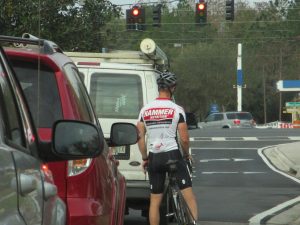 How many of you, cycling on public roads, would like to see cars pass you, your friends and family with a safe distance? How many of you have heard about the”3 Feet Rule”? How many of you know (from personal experience or otherwise) cars don’t pass 3 feet away from cyclists? How many of you have ever seen a ticket issued to a motorist passing within 3 feet of the cyclist? How many of you have ever talked to a police officer
How many of you, cycling on public roads, would like to see cars pass you, your friends and family with a safe distance? How many of you have heard about the”3 Feet Rule”? How many of you know (from personal experience or otherwise) cars don’t pass 3 feet away from cyclists? How many of you have ever seen a ticket issued to a motorist passing within 3 feet of the cyclist? How many of you have ever talked to a police officer 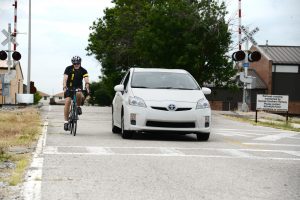 and requested a ticket be issued to a motorist for not passing with a 3 feet minimum distance? How many of you have ever been in court (like I have) and seen somebody prosecuted for passing less than 3 feet from the cyclist? I don’t need to ask this, because I know the answer. How many of you have been passed so close that you felt unsafe as the vehicle whistled closely by and swallowed with relief when that motorist finally got past you inches from your left wrist?
and requested a ticket be issued to a motorist for not passing with a 3 feet minimum distance? How many of you have ever been in court (like I have) and seen somebody prosecuted for passing less than 3 feet from the cyclist? I don’t need to ask this, because I know the answer. How many of you have been passed so close that you felt unsafe as the vehicle whistled closely by and swallowed with relief when that motorist finally got past you inches from your left wrist?
Florida bicyclists have a problem. Florida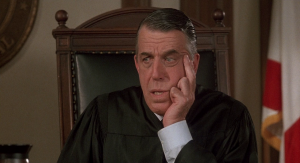 road officials have a problem. Florida judges have a problem. Florida law enforcement has a problem. All of us are stuck with so-called the “3 Feet Rule” found in Florida Statute 316.083 (1). Law enforcement officers look at enforcing this “3 Feet Rule” and realize the difficult logistics of it, and just skip it. Who can blame them. Think about it: enforcing this rule means measuring the width of the motor vehicle, a bicyclist and the lane of the road (where the offense took place) and subtracting to find out whether 3 feet had been kept by the motorist p
road officials have a problem. Florida judges have a problem. Florida law enforcement has a problem. All of us are stuck with so-called the “3 Feet Rule” found in Florida Statute 316.083 (1). Law enforcement officers look at enforcing this “3 Feet Rule” and realize the difficult logistics of it, and just skip it. Who can blame them. Think about it: enforcing this rule means measuring the width of the motor vehicle, a bicyclist and the lane of the road (where the offense took place) and subtracting to find out whether 3 feet had been kept by the motorist p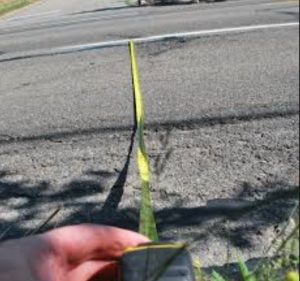 assing the bicycle. Just contemplating doing the work to give this ticket out, they wonder whether they can answer a judge’s question as to how they measured to determine if the “3 Feet Rule” was violated. The truth is, law enforcement has enough rules of which to keep track. The idea of also being a cartographer of the roads, to measure the width of the vehicle of an inpatient motorist sputtering in indignation by the side of the road
assing the bicycle. Just contemplating doing the work to give this ticket out, they wonder whether they can answer a judge’s question as to how they measured to determine if the “3 Feet Rule” was violated. The truth is, law enforcement has enough rules of which to keep track. The idea of also being a cartographer of the roads, to measure the width of the vehicle of an inpatient motorist sputtering in indignation by the side of the road  because she only passed a bicycle (“a bicycle for God’s sake“) supposedly “too close to a bicycle rider.” Meanwhile, the cyclist, just used to another hair-raising experience, has
because she only passed a bicycle (“a bicycle for God’s sake“) supposedly “too close to a bicycle rider.” Meanwhile, the cyclist, just used to another hair-raising experience, has
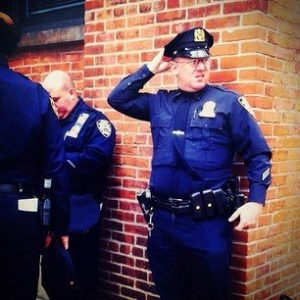
Was that a violation?
someplace to go, a long way to get there, may not be cooperating or didn’t even stop and has left the scene. To the police officer it sounds like a “no good deed gets unpunished” scenario right? That would explain why, in more than 31 years of law practice representing injured cyclists, I have only seen one motorist get a ticket for this (and only because he nearly killed two cyclists).
There is simply no good way to enforce the “3 Feet Rule.” One time, a Florida college town 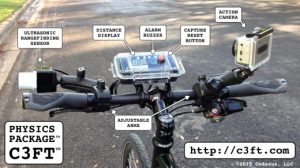 police department aware of the damage caused by and to students purchased an ultrasound-based sensing device and used it quite effectively. It’s called the C3FT and is made by Codaxus LLC in Austin Texas. It’s even got a third, new, improved generation unit out. Yet, at $1,480 per unit, it may seem like a high-priced tool for enforcing the “3 Feet Rule.” Apparently, the loss to the community and the family from a killed cyclist hasn’t compelled widespread purchase of this incredibly useful, accurate, and lifesaving device. So?
police department aware of the damage caused by and to students purchased an ultrasound-based sensing device and used it quite effectively. It’s called the C3FT and is made by Codaxus LLC in Austin Texas. It’s even got a third, new, improved generation unit out. Yet, at $1,480 per unit, it may seem like a high-priced tool for enforcing the “3 Feet Rule.” Apparently, the loss to the community and the family from a killed cyclist hasn’t compelled widespread purchase of this incredibly useful, accurate, and lifesaving device. So?
What do we do? How do we get motorists to pass cyclists according to the law? Well, first we should read the law. All this time we’ve been hearing this is the “3 Foot Rule.” It’s not. Read Florida Statute 316.083 (1) again: “The driver of a vehicle 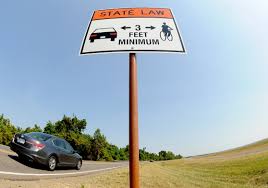 overtaking a bicycle or other nonmotorized vehicle must pass the bicycle or other nonmotorized vehicle at a safe distance of not less than 3 feet between the vehicle and the bicycle or other nonmotorized vehicle.” Why is it called the 3 feet rule? It should not be. It clearly emphasizes “safe distance” and then sets a minimum for that safe distance at
overtaking a bicycle or other nonmotorized vehicle must pass the bicycle or other nonmotorized vehicle at a safe distance of not less than 3 feet between the vehicle and the bicycle or other nonmotorized vehicle.” Why is it called the 3 feet rule? It should not be. It clearly emphasizes “safe distance” and then sets a minimum for that safe distance at 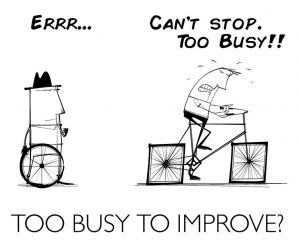 3 feet. In naming this statute, we should be calling this the “Safe Distance Rule,” not the 3 feet rule. The drafters of the statute probably meant well when they stuck in the 3 feet minimum to clarify what was safe a “safe distance.” This has done us bicyclists no service. It is abundantly clear if 3 feet was taken out of the law, the law would be unchanged. It would militate what I believe is the true spirit of the law. We can’t be too busy to improve.
3 feet. In naming this statute, we should be calling this the “Safe Distance Rule,” not the 3 feet rule. The drafters of the statute probably meant well when they stuck in the 3 feet minimum to clarify what was safe a “safe distance.” This has done us bicyclists no service. It is abundantly clear if 3 feet was taken out of the law, the law would be unchanged. It would militate what I believe is the true spirit of the law. We can’t be too busy to improve.
There are two perspectives on this law. The first emphasizes “safe distance”and the second gives a minimum for that “safe distance.” First, look at 3 feet aspect. How is 3 feet determined? Who defines what 3 feet is? A ruler does, of course. To enforce this rule, a police officer has to consult a ruler, get out of his motor unit and measure stuff. He has to get the cyclist to stop and let him measure the distance of the width of the cyclist vehicle, the width of the motorist, and the width of the lane they were traveling in. It’s much easier to internalize that “cyclists are just asking for it” or “that cyclist should be on the road” or “there wasn’t a crash, so that was a safe distance.” The net effect: is this life-saving law is not generally enforced.
On the other hand, how is a “safe distance” determined? A public safety officer does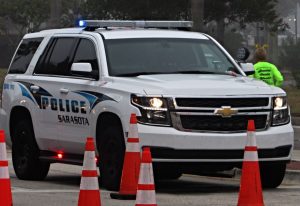 of course. Who is that safety officer? The one who is enforcing safety on our roads: all our law enforcement officers. No ruler or tape measure is needed to determine what is “safe.” That’s a public safety officer- or police officer’s whole job. Law enforcement a/k/a public safety officer uses his own seasoned experienced and trained judgment for safety to determine what a “safe
of course. Who is that safety officer? The one who is enforcing safety on our roads: all our law enforcement officers. No ruler or tape measure is needed to determine what is “safe.” That’s a public safety officer- or police officer’s whole job. Law enforcement a/k/a public safety officer uses his own seasoned experienced and trained judgment for safety to determine what a “safe 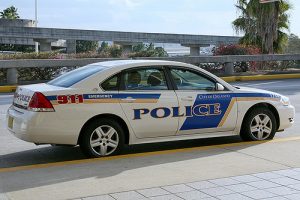 distance” is. Who do you think a judge will believe as to what a “safe distance.” Do you think a trained public safety/law enforcement officer, having spent years keeping the roads safe, safely driving the roads while behind other vehicles, observing those vehicles’ interactions will be able to tell what a safe distance is between a motor vehicle and a cyclist? That’s almost a stupid question when you think about it. How difficult would it be for a public safety officer, with all those years of experience, when he sees a hair’s breadth between the mirror of a car and the left handlebar of a cyclist to determine that’s unsafe? You think he could observe the
distance” is. Who do you think a judge will believe as to what a “safe distance.” Do you think a trained public safety/law enforcement officer, having spent years keeping the roads safe, safely driving the roads while behind other vehicles, observing those vehicles’ interactions will be able to tell what a safe distance is between a motor vehicle and a cyclist? That’s almost a stupid question when you think about it. How difficult would it be for a public safety officer, with all those years of experience, when he sees a hair’s breadth between the mirror of a car and the left handlebar of a cyclist to determine that’s unsafe? You think he could observe the 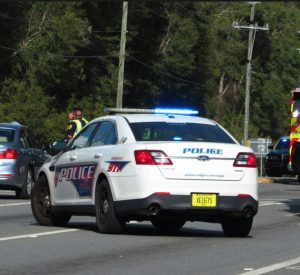 large mirror of a truck passing inches away from a cyclist’s left shoulder and determine that’s unsafe? How hard would it be for a County Court judge to believe a uniformed safety/police officer in his uniform saying the distance he saw between the motor vehicle and the cyclist was not “a safe distance”? Who would the judge believe? The safety/law officer observing from behind the two motorists and the bicyclists or the motorist was looking straight ahead? What if the cyclist who had almost been hit was subpoenaed to court? You think he would back up the officer’s version of the facts? You think he or she would be glad to testify against the motor vehicle driver?
large mirror of a truck passing inches away from a cyclist’s left shoulder and determine that’s unsafe? How hard would it be for a County Court judge to believe a uniformed safety/police officer in his uniform saying the distance he saw between the motor vehicle and the cyclist was not “a safe distance”? Who would the judge believe? The safety/law officer observing from behind the two motorists and the bicyclists or the motorist was looking straight ahead? What if the cyclist who had almost been hit was subpoenaed to court? You think he would back up the officer’s version of the facts? You think he or she would be glad to testify against the motor vehicle driver?
I encourage you every time you have a chance, talk with a law enforcement officer. These men and women who keep our roads safe really want to do the right thing when keeping our roads safe. When you approach, ask him or her: 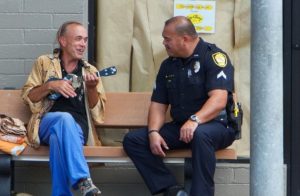 “how many times have you enforced the “Safe Distance” rule for cyclists?” Don’t let them correct, you. It is not a “3 feet rule,” it’s the “Safe Distance” rule. Three feet is a minimum, the actual law to enforce is a “safe distance.” Ask him or her if they feel experienced enough to determine a safe distance between a cyclist and motorist when they are riding behind the two vehicles. Ask them again: “Do you think with your years of experience you can judge what is a safe distance is between a motorist and a bicyclist?” I bet the answer would be “Yes, of course.” Then use that opportunity to educate them about the actual “Safe Distance” rule.
“how many times have you enforced the “Safe Distance” rule for cyclists?” Don’t let them correct, you. It is not a “3 feet rule,” it’s the “Safe Distance” rule. Three feet is a minimum, the actual law to enforce is a “safe distance.” Ask him or her if they feel experienced enough to determine a safe distance between a cyclist and motorist when they are riding behind the two vehicles. Ask them again: “Do you think with your years of experience you can judge what is a safe distance is between a motorist and a bicyclist?” I bet the answer would be “Yes, of course.” Then use that opportunity to educate them about the actual “Safe Distance” rule.
For too long we have impaired the motivation of police officers to enforce this rule by calling it the “3 Feet Rule.” It’s time to stop calling it that. We don’t do ourselves any favors by demanding for a 3 feet minimum passing distance when it’s too much work for a police officer to enforce. It’s time we called the “Safe Distance Rule” by its real name. When we acknowledge that “a safe” distance is what is actually required and not just 3 feet, perhaps our “public safety officers” will start enforcing this “safe distance” rule the legislature has mandated to protect the cycling public.
S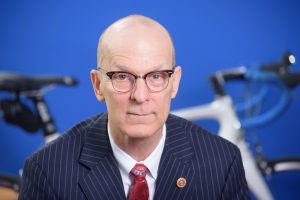 top clicking now if you are injured and searching for an attorney.
top clicking now if you are injured and searching for an attorney.
I am a full-service personalized, personal injury lawyer with a statewide practice in all 67 counties. I have 31 years of experience to put to work for you. Call me so I can answer your questions: 1-800 – 535 – 3002. Email: [email protected] Skype: ScienceCan Facebook: https://www.facebook.com/JSteeleLaw/ Twitter: @JSteeleOlmstead or @FlaBicyleLawyr Whatsapp: J. Steele Olmstead Instagram: jsteeleolmstead.
© 2018 J. Steele Olmstead, P. A., All rights Reserved
